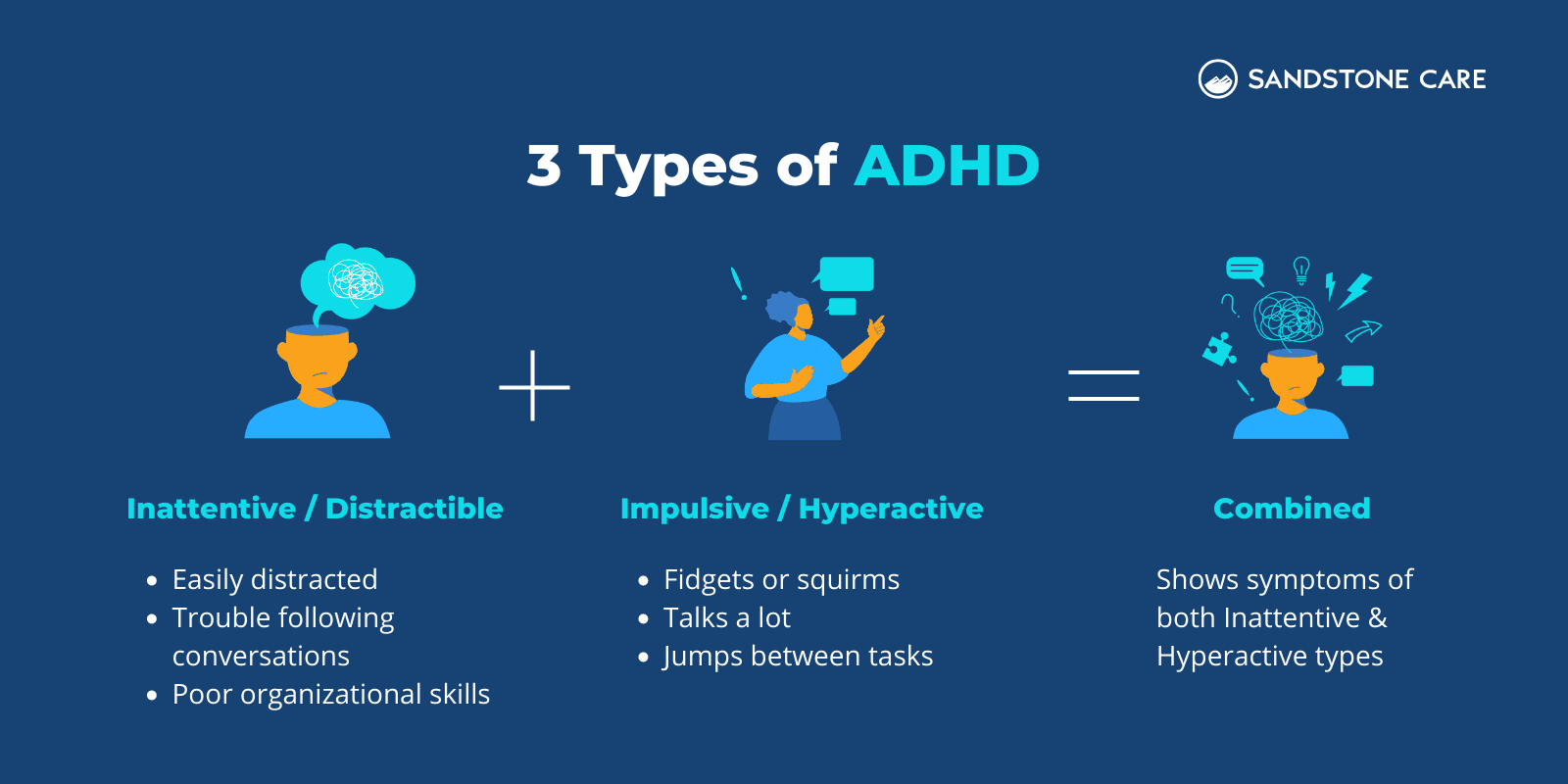Different types of ADHD in adults
January 11, 2023 - Reading time: 3 minutes

Although often linked to children, many cases of ADHD in adults go unnoticed and untreated.
The symptoms of ADHD are varied, making diagnosis difficult. This article aims to provide an overview of the various ADHD types found in adults, their characteristic symptoms, and potential treatments.
There are three primary subtypes of ADHD in adults, including inattentive type, hyperactive-impulsive type, and combined type.
Inattentive Type
Individuals with this subtype find it difficult to focus and maintain attention, which affects their ability to complete tasks. They may also struggle with forgetfulness and are easily distracted. Inattentive ADHD, commonly referred to as ADD, accounts for approximately 33% of all adult ADHD cases.
Hyperactive-Impulsive Type
This subtype is characterized by impulsivity and hyperactivity. People with this type may find it challenging to sit still, talk excessively, and are frequently restless. Hyperactive-impulsive ADHD accounts for around 7% of adult ADHD cases.
Combined Type
This subtype is a combination of inattentive and hyperactive-impulsive types, with symptoms of both. This type is the most common, accounting for 60% of adult ADHD cases.
Managing adult ADHD can be challenging, and it is crucial to learn as much as possible about the condition to handle it better. Resources are available to help understand and manage ADHD. The right approach varies for each individual, with a combination of medication, therapy, and lifestyle changes likely necessary.
What causes ADHD?
Research suggests that a combination of genetic, environmental, and neurological factors may contribute to its development.
Genetics: Research shows that ADHD is hereditary, with a significant genetic component. Environmental factors may interact with these genes to increase the likelihood of developing ADHD.
These genes likely interact with environmental factors to increase the risk of developing ADHD.
Brain Development: Brain imaging studies reveal differences in the function and structure of brain regions in people with ADHD. Specifically, regions involved in impulse control, attention, and emotional regulation are less active or smaller in people with ADHD. Lower levels of dopamine have been identified in children and adults with ADHD, leading to problems with attention and motivation.
Environmental factors: Several environmental factors increase the risk of developing ADHD, including prenatal exposure to tobacco and alcohol, low birth weight, and premature birth. Exposure to lead or other toxins, as well as brain injury, can also increase the likelihood of developing ADHD. Studies show that children who experience neglect, abuse, or traumatic events may be more likely to develop ADHD later in life.
It is essential to note that these factors do not necessarily cause ADHD, but rather contribute to its development. ADHD causes vary among individuals and likely result from the interaction of several factors.
Screening tools, such as the ASRS (Adult Self-Report Scale), CAARS (Conners' Adult ADHD Rating Scales), and VAAST (Vanderbilt Adult ADHD Scale), are frequently used to assess adult ADHD. Consulting with a mental health professional is vital to determine if ADHD is present and the best course of treatment.
In conclusion, adult ADHD is a complex condition with various forms and treatment options available. Through awareness and proper management, people with ADHD can learn to manage their symptoms and live fulfilling lives.

